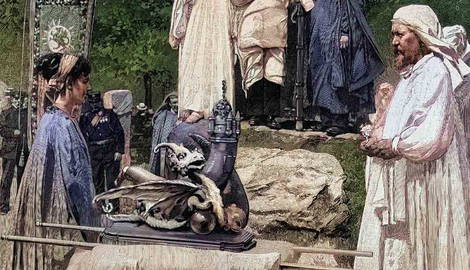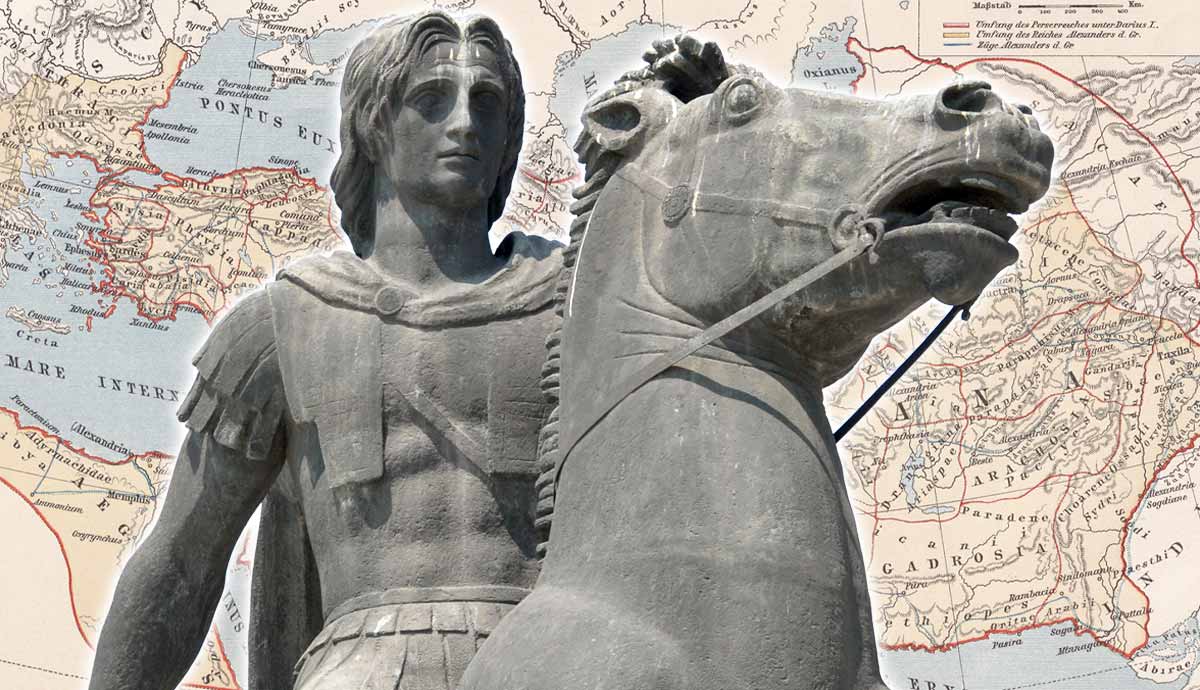
Wales is a unique country with a complex history that has been shaped by centuries of conflict, religion, and cultural assimilation. What defines Welsh culture is its language and its rich and detailed history. An important facet of this history are the Druids. So, who were the Druids and why are they considered such an integral part of Wales?
Where Did the Druidic Culture Come From?

Historians have long debated the origins of the Druids. Some believed that the Druids originated from parts of Europe or, according to some others, from Egypt or even Mesopotamia. Some claimed that Druidism originated in ancient Egypt by the scholar Ptah as an offshoot of Egyptian polytheism, later to be extracted as teachings by Moses upon his pilgrimage to Egypt. More famously, Julius Caesar stated the Druids originated from the British Isles, with numbers mostly abundant in what is now called Wales.
During the Renaissance, interest in Druidism grew. Descriptions saw them draped in white robes adorned with animalistic trophies and jewelry. They were known to worship nature, with oak trees and mistletoe being a particularly important aspect of their belief.
Over the years, the Druids became synonymous with Wales and Welsh culture, with the isle of Anglesey being a place of particular Druid influence and interest. Modern Welsh culture can trace its origins in the legend and mythology that stems from such works as the Mabinogion, which contains stories in prose compiled between the 12th and 13th century.
To understand the importance of the pre-Christian religion in Wales and its influence on modern-day Welsh cultural heritage, it’s prudent to look further into Wales’s most prestigious, largest, and culturally significant event, the National Eisteddfod.
The National Eisteddfod

The origin of the Eisteddfod dates back to 1176 when Lord Rhys invited a host of Welsh artists, poets, and musicians to his castle at Cardigan for what he called a celebration of the Welsh. The best poet and musician at the gathering were awarded a seat at the grand table, where the Eisteddfod’s most notable prize originated: the grand chair.
The name Eisteddfod is a literal translation from eistedd (to sit) and fod (to be). The Eisteddfod is at the pinnacle of Welsh celebration; it’s a festival that acknowledges the ancient roots of the people, its cultural origins, and a celebration of the language, the hardships endured by the country, and its musical and poetic prowess on the world stage. It has incorporated facets of Druidic ceremony and ritual into its events over the years.

The first and most notable Druidic-influenced and adapted ceremony is that of the Gorsedd. It was conjured up in the 1700’s by Iolo Morganwg. His devoted passion for Welsh literature and song, coupled with his eccentric interest in Wales’s colorful and eclectic history, gave him the inspiration to create and include the Gorsedd ritual in future Eisteddfods. The ritual consists of a flat stone surrounded by a circle of bards and minstrels. Upon the stone stands the archdruid, draped in white and adorned with a crown. The rest of the ritual includes the carrying of the grand sword. The flat stones, called Logan stones, are dotted around any village or town that has played host to an Eisteddfod in the past. They can be found in fields or near the center of most major Welsh towns, cities, and villages.
The Archdruid and the Flower Dance

Other notable Druidic influences on the Eisteddfod come in the form of the Archdruid and the popular flower dance. The Archdruid is elected to lead the Gorsedd for a term of three years. The selection is made from a group of notable and influential elders who have made a contribution to the festival and culture. The leader is adorned in a grand robe, a golden sash, and a crown depicting leaves and oak, all significantly Druidic.
The Eisteddfod has a hierarchy of sorts, distinguished by the color of the garb. White robes are selected for previous winners and those who have previously held the chair. The green robes are for those who hold specialized degrees associated with Welsh culture and the arts, and have made a significant contribution to Welsh culture. Blue robes are for those who have contributed to fields such as law and science, and have helped within their local communities.
The flower dance is a notable and popular tradition at the festival. It is performed by young women who are selected from the local area. They are tasked with picking flowers and arranging them into a bouquet, which is then given to the Morwyn a fro, a woman who holds the grand floral bouquet representing the wilderness of Wales and is presented to the archdruid during the main section of the ceremony. Before the Archdruid appears, a horn is blown by the Mam y fro (local mother). She is distinguished by her red cloak and golden crown. These traditions and rituals have been a staple of the Eisteddfod for hundreds of years and represent Wales’s Druidic roots. However, it is not only at the Eisteddfod festival that Wales has been influenced and shaped by its Druidic roots.
Mystical Islands and Sacred Groves

There are a number of Druidic sites dotted around Wales, but none are better documented and as notable as that of the Isle of Mona, now known as Anglesey. This small island at the very tip of north Wales played host to the Druidic stronghold that was tentatively conquered by the invading Roman army. Tacitus documented that the island was home to a cannibalistic tribe that worshipped many gods. There are plenty of myths and legends about Anglesey, and they draw many tourists from around the world every year. It is said that every ancient oak tree there has a significant and sacred purpose because the Druids worshipped them. A small lake at the center of the island is said to have been a holy site for the Druids, and when it was dredged up in the 1940s, swords, shields, and Roman chariots were discovered.

At Holyhead Mountain, in the very north of the island, sits an ancient stone circle visited by modern druids and pagans on every solstice. The same can be said of the ancient burial mound Bryn Celli Dy, which hosts one of the largest Druidic gatherings outside of Stonehenge.
A few miles down the road is a site where sat the Hendy head; in a small secluded grove near a bubbling brook lies an ancient Iron Age sculpture believed to be used for ritual and sacrifice. The head has since been moved to the local museum. From the north of Anglesey over the sea to the rest of Wales there’s a barely distinguishable path called Pilgrims Way. This path stretches miles across the coast and on the way rests the Druids circle high atop the moors. This stone circle is believed to have been a significant site for human sacrifice.
The Druids of Wales and the Rest of the World

Notable authors, including Tolkien and George R.R. Martin, have used Wales’s complex and vast druidic history as inspiration for their works.
Books such as the Mabinogion have been important standards for fantasy writers over the years, with the tales and characters from Game of Thrones taking inspiration from certain stories in the Mabinogion. Tolkien created the Elvish language around Welsh and spoke about his love of the country and its history. Alice in Wonderland author Lewis Carol used to visit the town of Llandudno; notable landmarks and local folk tales gave him the inspiration behind many of the stories and characters found in his famous works.
In a recent poll, people were asked what defines Welsh culture and what they think of when the country of Wales is mentioned. The top three answers were not surprising: the red dragon that adorns the national flag, the Welsh language that is one of the oldest in Europe, and the Druids were what people associated with Wales. For a country so small, Wales has made a big footprint on the world stage with its vast and complex history, its contribution to the arts, and its cultural heritage that stem from its clear and inspirational Druidic and pagan roots.








